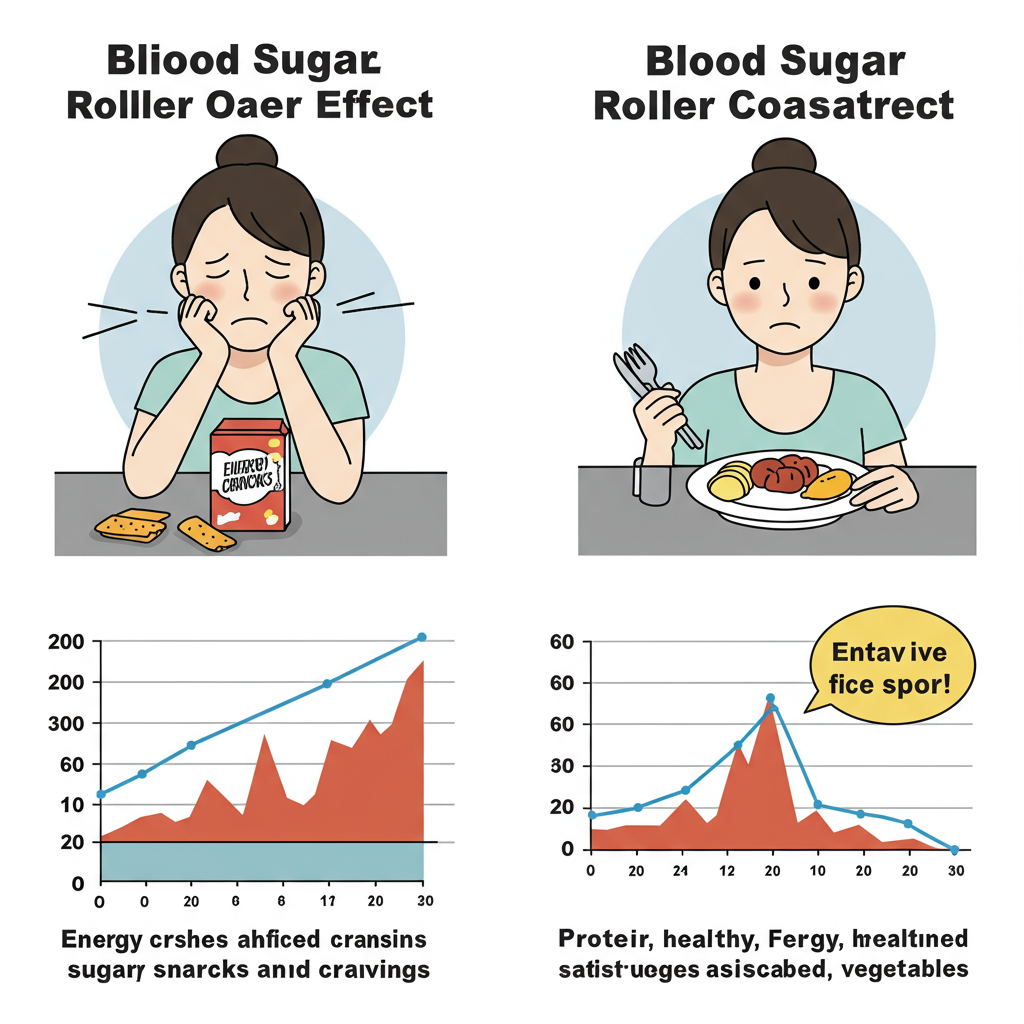In today's world of conflicting nutrition advice and fad diets, one undeniable truth remains: achieving and maintaining a healthy weight depends significantly on how well we manage our blood sugar. As a functional medicine practitioner, I've witnessed countless patients transform their bodies and health not through extreme calorie restriction, but by understanding and balancing their blood glucose levels. Let's explore why blood sugar control might be the missing piece in your weight loss journey.
The Blood Sugar-Weight Connection: Breaking the Cycle
When you consume carbohydrates, especially refined ones, your blood sugar rises quickly. In response, your pancreas releases insulin to help move that glucose into your cells. This normal process becomes problematic when it happens too frequently. High insulin levels lock fat in your cells, making weight loss nearly impossible while simultaneously signaling your body to store more fat—particularly around your midsection.
This creates what I call the blood sugar roller coaster: high blood sugar spikes followed by crashes that trigger hunger, cravings, and energy dips. You reach for more carbs, and the cycle continues. Many people struggling with weight aren't simply lacking willpower—they're trapped in this metabolic cycle that biologically drives overeating and fat storage.
The science is clear: insulin resistance (when your cells stop responding properly to insulin) strongly correlates with obesity. In fact, addressing insulin resistance often leads to weight loss even without explicit calorie counting. Your body simply can't effectively burn fat when insulin levels remain chronically elevated.

Blood Sugar Balancing: The Foundation for Sustainable Weight Loss
Unlike quick-fix diets that inevitably fail, blood sugar management creates sustainable weight loss through several mechanisms:
1. Reduced cravings and hunger
When blood sugar remains stable, you experience fewer cravings and more consistent energy levels. This naturally reduces overeating and makes healthier food choices easier. My patients routinely report that their "food noise"—that constant mental negotiation about what to eat—diminishes dramatically when blood sugar stabilizes.
2. Improved fat burning
Lower insulin levels allow your body to access stored fat for energy. Many people with blood sugar issues have plenty of stored energy (fat) but can't access it because high insulin keeps it locked away. Balancing blood sugar flips the metabolic switch from fat-storing to fat-burning.
3. Decreased inflammation
Blood sugar spikes trigger inflammatory responses that interfere with weight regulation hormones. By reducing these spikes, you calm systemic inflammation, allowing your natural hunger and satiety signals to function properly.
4. Enhanced metabolic flexibility
The ability to easily switch between using carbohydrates and fats for fuel represents optimal metabolic health. Blood sugar balancing restores this flexibility, making your body more efficient at using whatever fuel is available—including your stored fat.
Practical Steps to Balance Blood Sugar for Weight Loss
Transforming your metabolism isn't complicated, but it does require consistency. Here are my proven strategies:
Start your day with protein, not carbs
Replace breakfast cereals, pastries, and fruit juices with protein-rich options like eggs with vegetables or a protein smoothie with healthy fats. This sets your blood sugar on a stable trajectory for the entire day.
Adopt the plate method
Structure your meals with: half non-starchy vegetables, quarter protein, quarter complex carbohydrates, plus healthy fats. This composition naturally blunts blood sugar spikes while providing satisfying nutrition.

Time your carbs strategically
Consume most of your carbohydrates around exercise when your muscles can most effectively utilize glucose. Consider a "carb curfew"—limiting starchy foods after sunset when insulin sensitivity naturally decreases.
Incorporate movement after meals
Even a 10-minute walk after eating can lower post-meal blood sugar spikes by up to 30%. This simple habit improves insulin sensitivity and helps prevent the fat-storing effects of high blood glucose.

Practice stress management
Chronic stress elevates cortisol, which raises blood sugar independent of food intake. Daily stress reduction through meditation, deep breathing, or gentle movement creates a physiological environment conducive to weight loss.
Consider time-restricted eating
Condensing your eating window to 8-10 hours daily gives your body extended periods without insulin secretion, improving insulin sensitivity and facilitating fat burning. Start with a 12-hour overnight fast and gradually extend as comfortable.
The beauty of blood sugar balancing for weight loss lies in its sustainability. Rather than fighting your body's biology, you work with it. As insulin levels normalize and cells regain sensitivity, weight loss becomes a natural outcome rather than a constant struggle.
Remember, sustainable weight loss isn't about willpower or deprivation—it's about creating hormonal harmony that allows your body to find its healthy weight naturally. By making blood sugar balance your foundation, you not only achieve weight loss but also gain energy, mental clarity, and long-term health.
References:
Ludwig, D. S., & Ebbeling, C. B. (2018). The Carbohydrate-Insulin Model of Obesity: Beyond "Calories In, Calories Out". JAMA Internal Medicine, 178(8), 1098–1103. https://doi.org/10.1001/jamainternmed.2018.2933
Paoli, A., Rubini, A., Volek, J. S., & Grimaldi, K. A. (2013). Beyond weight loss: a review of the therapeutic uses of very-low-carbohydrate (ketogenic) diets. European Journal of Clinical Nutrition, 67(8), 789–796. https://doi.org/10.1038/ejcn.2013.116






